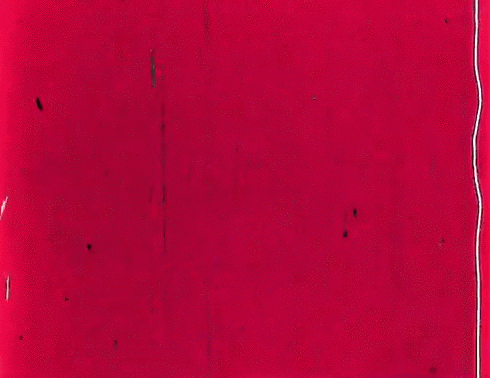July 22, 2018
Allures
Jordan Belson, 1961, USA, 8 min
A metaphor of creation. Spirals, circles, and abstract forms move against alternating dark and light backgrounds. An orb changes color, appearing in flash frames. Dots resembling stars or atoms and galaxies with shooting stars are created on the screen. The stars then order themselves into lines. Exploding sunbursts end the film.

***
“It’s a glorious thing if you don’t expect an explanation.” Jordan Belson on his Art
by Jordan Belson and Raymond Foye
When I lived in San Francisco (1977 – 79) the person I most wanted to meet (after Bob Kaufman) was Jordan Belson. But he had already become quite a famous recluse and all attempts were rebuffed. Belson’s remarkable underground films are often paired with Harry Smith’s: they were best friends and shared a painting studio on and off from 1948 until 1953; both were supported by Hilla Rebay, doyenne of non-objective painting and co-founder of the Guggenheim Museum. As psychedelic pioneers and be-bop fanatics, they planted the seeds for much of our present visual world. Yet while Smith’s early films used geometric space as their field, Belson explored the more unbounded states described in titles like Meditation, Transmutation, and Samadhi.
From 1957 – 59, Belson collaborated with electronic music pioneer Henry Jacobs on the late night series Vortex: Experiments in Sound and Light at the San Francisco Planetarium. Direct antecedents of the 1960s lightshows, the concerts were vastly successful and attracted all of the “heads” of the Bay Area. Film historian Cindy Keefer writes: “In the blackness of the planetarium’s 65-foot dome, Belson created spectacular illusions, layering abstract patterns, lighting effects, and cosmic imagery, at times using up to 30 projection devices.”
Quite unexpectedly in 1999 Harry Smith scholar Rani Singh offered to take me by Belson’s dark and elegant San Francisco apartment, which easily could have been transplanted from 18th-century Kyoto. Belson had returned to making visual art in earnest a few years earlier. He was both wary and eager to show us a series of pastels that were a remarkable summation of his belief in non-objective art as an all-encompassing aesthetic, from the pyramids of Egypt and the temples of India, to the new optics of psychedelics, NASA space photography, and the inner visions of meditation and yoga practice.
Belson proved to be witty and gracious, and very much in touch with contemporary art (he was particularly fond of Clemente, Taaffe, and Tomaselli). I was invited back once or twice a year for long sessions of talking and viewing. I was not allowed to photograph or run a tape, but taking notes was permitted. Over the next five years I filled a dozen small notebooks with his remarks, and when he died in 2011 (at the age of 85) I realized he’d been dictating a kind of testament.
The Van Gogh syndrome is a myth that dies hard. We all want to believe somewhere there is an undiscovered genius, plying his or her revolutionary work in quiet obscurity. Belson is as close to that as I have encountered. As a visual artist his will be a posthumous career. I hope the 1,200 works carefully preserved by his wife Cathy Heinrich soon find the art audience that unknowingly needs the wisdom and grace they contain.
***
Free Radicals (1958) de LEN LYE (August 23, 2011)
Opus-1 (1964) de PIERRE HÉBERT (August 11, 2010)
Autour de la perception / Around Perception (1968) de PIERRE HÉBERT (August 3, 2010)

